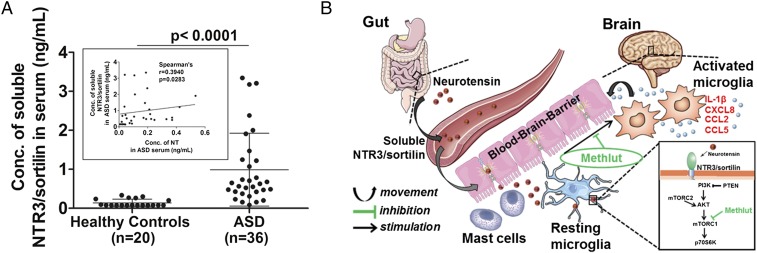Fig. 9.
Increased serum NTR3/sortilin levels in ASD and the proposed scheme by which NT may contribute to inflammation of the brain. (A) Levels of soluble NTR3/sortilin and circulating NT were measured by ELISA in the serum of children with ASD, compared with age- and sex-matched healthy controls. Significance of comparisons is denoted by P < 0.0001. (Inset) Positive correlation between serum sortilin and NT levels is shown using the Spearman rank correlation test (Spearman’s r = 0.3940, P = 0.0283). (B) Diagrammatic representation of how serum NT could derive primarily from the gut and increase permeability of the intestinal lumen and the BBB by stimulating perivascular mast cells. NT in the brain could then stimulate microglia via NTR3/sortilin, which is elevated in the serum of children with ASD. Proinflammatory mediator release from microglia through activation of mTOR signaling kinase thus may contribute to inflammation of the brain and the pathogenesis of ASD. The flavonoid Methlut inhibits these processes and could be a novel treatment of ASD.

